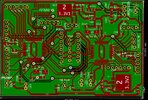I know nothing about this flavor of basic so I could be way off base here, but there are two things that stand out......and the INTERRUPT doesn't fire.
First, nothing appears to be enabling the peripheral interrupts
Code:
//And enable the interrupts for the hardware used
//the reference for CCP1, so no time interrupt required.
PIE1.CCP1IE = 1
INTCON1.PEIE = 1 // INTCON bit 6
INTCON1.GIE = 1 // INTCON bit 7and in the ISR nothing appears to be clearing the CCP1 IF flag
Code:
//INT_CCP1
On High Interrupt
PIR1.CCP1IF = 0 // clear IF

